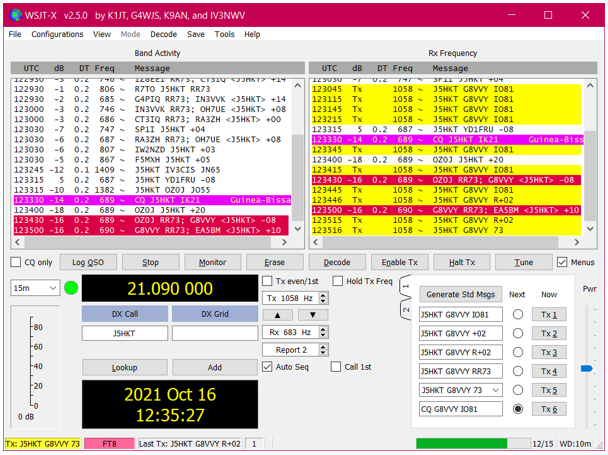Amateur and Hobby Radio
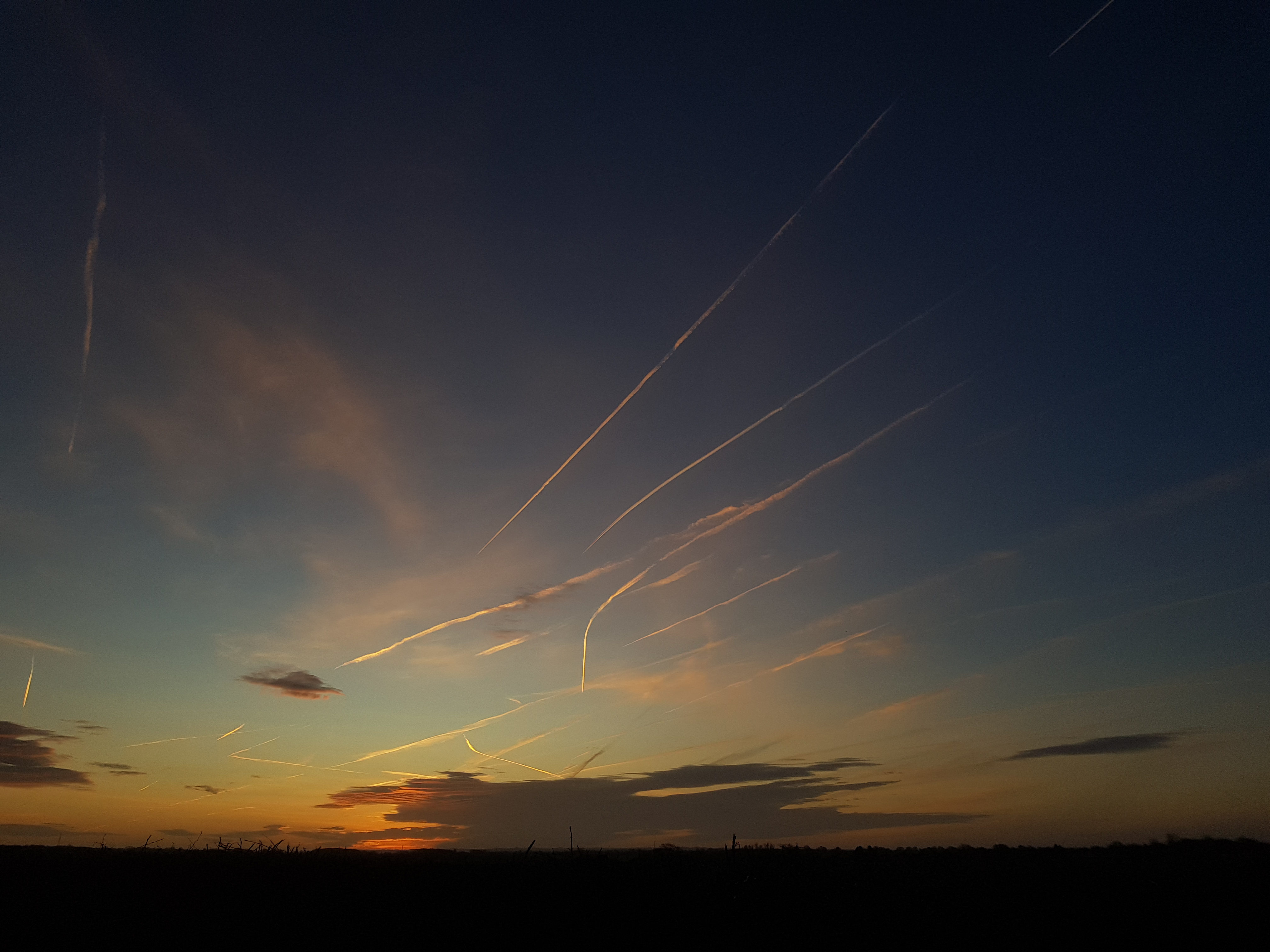
- Home
- Walking and Cycling
- Photography
- Amateur Radio - Introduction
- Slow Scan TV
- GB3TD Repeater
- Satellites
- Navtex - Marine Safety Info
- SDR - Software Defined Radio
- G2B - Special Contest Call
- Amateur Radio Contests
- QRP - Operating Notes
- Decoding FM DAB signals
- Decoding ADS-B
- Links to Useful Sites
- NOAA Weather Satellites
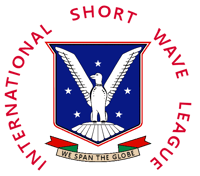

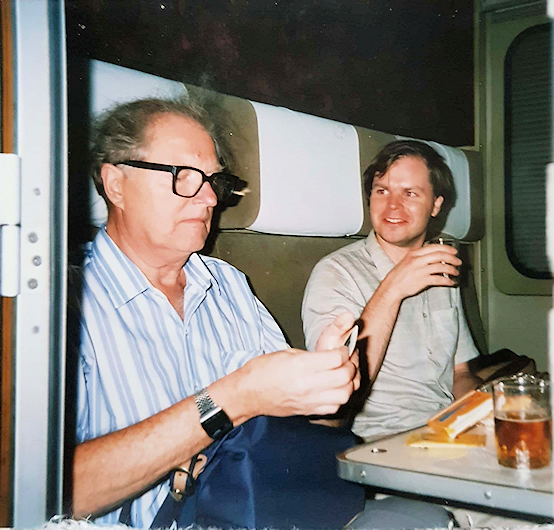
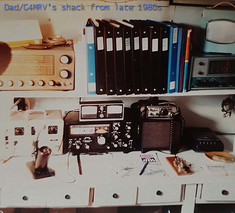

Growing up, I had amateur radio all around me as my late father - callsign G4MRV - had been interested in the hobby from the 1950s onward.
He built receivers, transmitters and a wide range of test equipment and there was always the sound of exotic broadcasts coming from his 'shack' in the attic. Eventually, I persuaded him to let me go up into the attic and it wasn't long before I got hooked on radio.
Along with a couple of school chums, I helped form the radio club at my secondary school. We used pretty clandestine - by today's standards - equipment, but it worked well. Both of the other guys, being cleverer than me, passed their exams - including the morse test - whilst still studying. The first one to pass would walk the short distance home from school and get on the air during the lunch break.
At school we had an National HRO receiver and we would listen to our licensed school chum endeavouring to make contacts using an AM transmitter - I don't remember the details unfortunately - from home, using a long(ish) wire wrapped around the inner walls of his bedrooom! I believe he used an Eddystone valved receiver with a separate Geloso VFO.
I remember getting a nasty RF burn from accidentally touching the end fed long wire! I can't see that particular set-up meeting the license requirements regarding EMF. 😵
After an initial abortive attempt at the Radio Amateur's Examination - RAE - in the early 70's, I finally sat the test in 1979 and received my 'B' Class license in 1980; receiving the call G8VVY.
The bulk of my operating was on 2m Single Side Band - SSB - with forays into RTTY, SSTV, AMTOR and PACKET. With a minimal set-up - Icom IC251E and IC275E with 9 or 10 element beams mounted on the house - I contacted stations all over Europe!.
Come 1996, and the earlier loss of my Dad - G4MRV, I decided to close my logbook and leave the hobby.
It wasn't until 2018 that I realised that I'd been potentially missing out on a brilliant hobby and decided to correct that mistake.
A very short call to Ofcom had my license re-instated and I set about seeing what I could ressurect from anything I had retained in the way of radio gear over the years. I briefly managed to get working my old ICµ2E - briefly - but decided to put together a new base set-up comprising the Yaesu FT817ND and Kenwood TS480HX.
I have added the Icom ID51E +2 and Kenwood TH-D74 E handhelds to the range, and still have the Baofeng UV-82 which intially got me going once again.
Something I could not have dreamed of when I was first licensed would have been to be a member of what id known as the DX Century Club. You have to achieve confirmed contacts with 100 countries; not a possibility with my 2m VHF station.
On returning to the hobby though, my Class 'B' license automatically advanced to a full license and allowed me complete access to all of the UK permitted amateur bands.
I have to admit that my DXCC achievements all rely on the use of digital modes of communication, but I have qualified for 3 to date and hope fairly soon to add a 50 country upgrade to the mixed mode award:
He built receivers, transmitters and a wide range of test equipment and there was always the sound of exotic broadcasts coming from his 'shack' in the attic. Eventually, I persuaded him to let me go up into the attic and it wasn't long before I got hooked on radio.
Along with a couple of school chums, I helped form the radio club at my secondary school. We used pretty clandestine - by today's standards - equipment, but it worked well. Both of the other guys, being cleverer than me, passed their exams - including the morse test - whilst still studying. The first one to pass would walk the short distance home from school and get on the air during the lunch break.
At school we had an National HRO receiver and we would listen to our licensed school chum endeavouring to make contacts using an AM transmitter - I don't remember the details unfortunately - from home, using a long(ish) wire wrapped around the inner walls of his bedrooom! I believe he used an Eddystone valved receiver with a separate Geloso VFO.
I remember getting a nasty RF burn from accidentally touching the end fed long wire! I can't see that particular set-up meeting the license requirements regarding EMF. 😵
After an initial abortive attempt at the Radio Amateur's Examination - RAE - in the early 70's, I finally sat the test in 1979 and received my 'B' Class license in 1980; receiving the call G8VVY.
The bulk of my operating was on 2m Single Side Band - SSB - with forays into RTTY, SSTV, AMTOR and PACKET. With a minimal set-up - Icom IC251E and IC275E with 9 or 10 element beams mounted on the house - I contacted stations all over Europe!.
Come 1996, and the earlier loss of my Dad - G4MRV, I decided to close my logbook and leave the hobby.
It wasn't until 2018 that I realised that I'd been potentially missing out on a brilliant hobby and decided to correct that mistake.
A very short call to Ofcom had my license re-instated and I set about seeing what I could ressurect from anything I had retained in the way of radio gear over the years. I briefly managed to get working my old ICµ2E - briefly - but decided to put together a new base set-up comprising the Yaesu FT817ND and Kenwood TS480HX.
I have added the Icom ID51E +2 and Kenwood TH-D74 E handhelds to the range, and still have the Baofeng UV-82 which intially got me going once again.
Something I could not have dreamed of when I was first licensed would have been to be a member of what id known as the DX Century Club. You have to achieve confirmed contacts with 100 countries; not a possibility with my 2m VHF station.
On returning to the hobby though, my Class 'B' license automatically advanced to a full license and allowed me complete access to all of the UK permitted amateur bands.
I have to admit that my DXCC achievements all rely on the use of digital modes of communication, but I have qualified for 3 to date and hope fairly soon to add a 50 country upgrade to the mixed mode award:

FT - machine generated - modes
FT8 and FT4 are digital modes of amateur radio communication and part of the package known as WSJT-X. They are knows as 'weak signal' modes and capable of supporting communications over long distances and under poor band conditions.WSJT-X derives it's name from it's inventor - Joe Taylor/K1JT - and was originally developed around meteor scatter modes in 2001. FT8 followed in 2017 and FT4 in 2019. The 'FT' part derives its name from the collaboration formed by Joe Taylor, K1JT and Steve Franke, K9AN.
There is a plethora of information on the Net about dowloading and configuring the application and how to link a PC to a communications transceiver in order to make contacts.
I was more than a little sceptical to start with; thinking like many, that it isn't true amateur radio when you have two computers communicating with each other - albeit via RF. What it does achieve though is the ability to make long distance contacts when more conventional modes, like Single Side Band (SSB) and Frequency Modulation (FM), would most probably not get through.
I've had a great deal of enjoyment operating with FT4 and 8 and acheived some amazing distances with only 5 Watts power and indoor wire antennas!
Here is a map showing the places I've been able to reach as at February 2023:
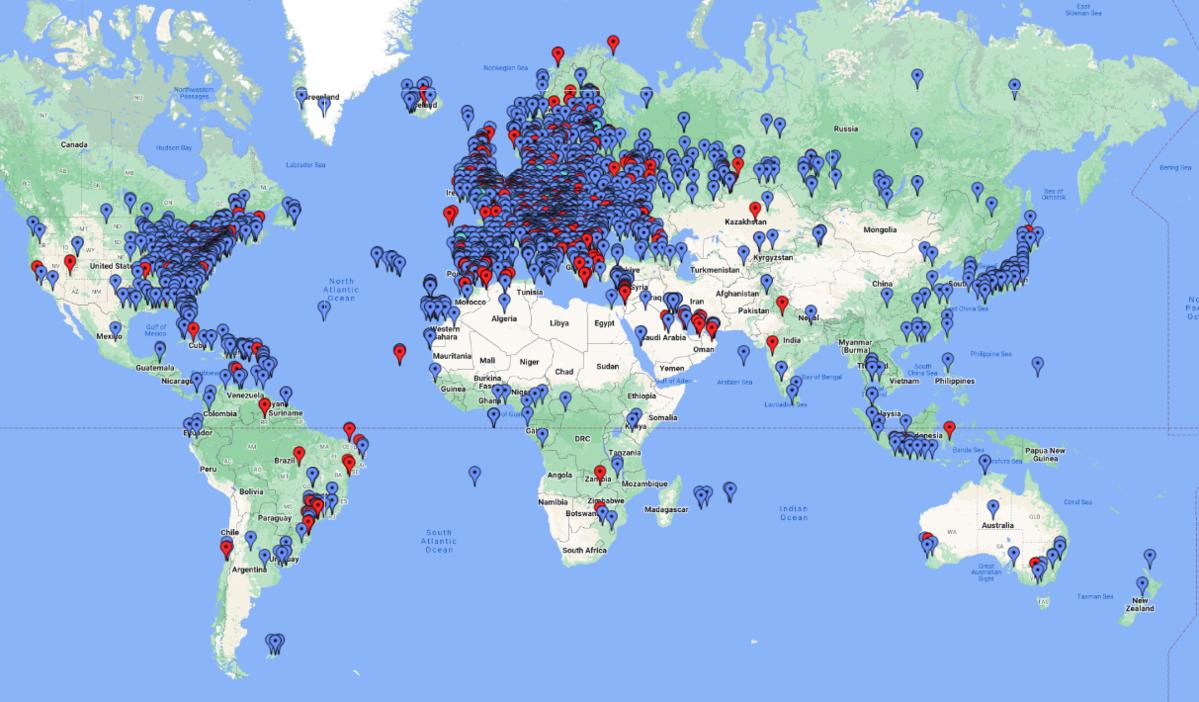
Blue markers are 'FT' digital modes - 5 Watts power/indoor antennas. Red ones are SSB - up to 200 Watts and indoor antennas.
I wrote a little article on the subject. This isn't a technical appraisal - I'm not that clever - just a collection of, what I hope will be useful, information to help someone get started with these modes.
FT8/FT4 MODES – AN OPERATIONAL PERSPECTIVE by G8VVY - RAOTA #3020
This write-up is to identify some of the practices – that may not be so obvious when one starts using these, and related, mode(s) - that I have come across during my workings with FT8 and FT4.
FT8 came into being in 2017; FT following a couple of years later in 2019. Joe Taylor, K1JT; Bill Somerville, G4WJS and Steve Franke, K9AN were the very clever instigators and there is a wealth of material on the Internet about the technical aspects of these and related protocols.
The FT modes are designed for making basic QSOs under weak signal conditions. FT8 uses 15 second frames for transmit and receive, whilst FT4 runs double the rate - 7.5 seconds – and was devised for contesting; the RSGB have an 80m FT4 event running throughout the year.
Both modes use Continuous-phase Frequency Shift Keying; FT8 uses 8 audio tones, with FT4 using 4 tones. FT4 is approximately 2.5 times faster than FT8, but loses out by 3.2dB.
I have found that FT4 can often be better when there is bad QSB as you are much better able to complete the QSO during short periods of signal strength improvement.
It is often noticeably less ‘accurate’ in its decoding veracity – even when using WSJT-X’s ‘deep’ decoding; but with, very often, fewer competing stations and double the frame rate … it lets you get the job done!
When other modes are notable by their absence of signals, there’s usually some FT activity on at least one of the HF bands.
When I originally wrote this piece, I found that 20m offered the best scope for some good DX. With the ever changing sunspot cycle though - now in November 2022 – 10m has shown some excellent DX openings. FT4 very often comes alive during these openings.
All of my digital mode operation has been achieved using the Yaesu FT817ND. When one only has 5 Watts to play with and indoor dipole antennas; even the FT modes are very often going to be a challenge.
With good conditions, and a bucketful of luck on your side, it is possible to work the most exotic of locations and – distance-wise – I have made the trip to the Antipodes on several occasions.
Probably the most important issue to take care of before venturing into machine generated modes is to ensure your machine/computer is synchronised as closely as possible to atomic clock time.
Meinberg are a manufacturer of such clock devices and also offer a free NTP software package that is easy to install. It is very much ‘set it and forget it’ and I occasionally check my PC time at the time.is webpage and it has always shown the correct time. The service has a very small ‘footprint’.
This next bit describes how I configured the settings within WSJT-X to best suit my operational needs.
Moving straight to the WSJT-X GUI (Graphical User Display); I ‘check/tick’ the DXCC, grid and worked-before status box under Display.
Moving straight to the WSJT-X GUI (Graphical User Display); I ‘check/tick’ the DXCC, grid and worked-before status box under Display.

Under Behaviour, I allow Tx freq. changes and ‘wind up’ the Tx watchdog to the maximum of 10 minutes. I find this is OK when using the FT817ND; the rig always runs quite hot – even more so using 100% duty cycle modes - but it often takes considerably longer than 10 minutes to work a particularly elusive station!
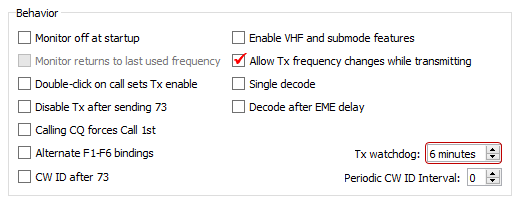
NOTE: I’m not suggesting this practice for all operators. You will know whether your particular transceiver will accommodate 100% operation for long periods of time without damage.
Do check regularly, if you are running QRP like myself, that there is no one sitting on your transmit frequency that could be drowning your signal!
I did have a number of additional ‘Tx Macros’ stored to start with but found that it very often confused other amateurs and I’d finish up having to send ‘73’ anyway!
I do have a BEST 73 one which I use for certain QSOs; usually when the signals are strong and the contact will understand the sentiments!
Do check regularly, if you are running QRP like myself, that there is no one sitting on your transmit frequency that could be drowning your signal!
I did have a number of additional ‘Tx Macros’ stored to start with but found that it very often confused other amateurs and I’d finish up having to send ‘73’ anyway!
I do have a BEST 73 one which I use for certain QSOs; usually when the signals are strong and the contact will understand the sentiments!

If you’re fast enough on the keyboard, you can create messages ‘on the fly’. I usually find the stations I wish to send something like that to have moved onto the next QSO by the time my fingers have tapped out something specific! 😀
Under ‘Settings’ and ‘Reporting’; I agree with the set-up in the WSJT-X manual and have it prompt me to save the QSO and send details to ‘PSK Reporter’.
Under ‘Settings’ and ‘Reporting’; I agree with the set-up in the WSJT-X manual and have it prompt me to save the QSO and send details to ‘PSK Reporter’.
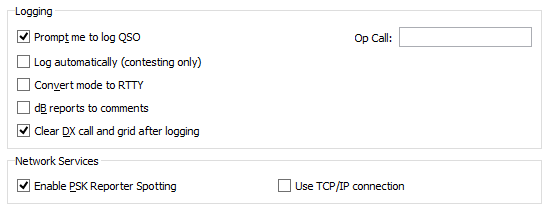
he ‘PSK Reporter’ spotting also enables integration with GridTracker. I’ll not talk about that application here as it really deserves an article all its own.
Again, there is a plethora of information about it on the Internet. I will say that it adds a huge amount of enjoyment to working with these mode types and can quickly draw your attention to the rare DX.
On the ‘Frequencies’ TAB; it can be useful to add frequencies that you use frequently. I generally only use the standard allocations but if you need to log the operating frequency accurately, it would be a good idea to include the popular DXpedition frequencies, for example, too.
Under ‘Colours’, I find this is a very personal choice. I found the original colours not sufficiently distinct for my vision so changed them to suit.
I don’t have ‘New Continent’, ‘New DXCC’ etc. checked as I let GridTracker handle this for me.
Again, there is a plethora of information about it on the Internet. I will say that it adds a huge amount of enjoyment to working with these mode types and can quickly draw your attention to the rare DX.
On the ‘Frequencies’ TAB; it can be useful to add frequencies that you use frequently. I generally only use the standard allocations but if you need to log the operating frequency accurately, it would be a good idea to include the popular DXpedition frequencies, for example, too.
Under ‘Colours’, I find this is a very personal choice. I found the original colours not sufficiently distinct for my vision so changed them to suit.
I don’t have ‘New Continent’, ‘New DXCC’ etc. checked as I let GridTracker handle this for me.
It is important to maintain a ‘clean’ signal when transmitting and if you over drive the sound card circuitry you can create distorted signals and audio harmonics; not conducive to getting contacts and not giving you a good name either!
With the FT817ND, I have found it very important to keep the ALC to the barest minimum – not showing a single bar if possible. It’s always tempting to increase it if you see that you’re putting out a few more milliWatts … but it will result in less successful QSOs.
Make sure you keep the Receive bar graph indicator in the ‘Green’. Over driving the sound inputs could cause distortion and lower the chance of getting good decodes.
Regarding frequencies; it is recommended that you choose a ‘quiet’ frequency and check the ‘Hold Tx freq’ box to stay on it.
Looking at the ‘Decode’ options – ‘Fast’, ‘Normal’ and ‘Deep’ plus ‘Enable AP’ – your overall PC specification may determine which of these you might best employ. 3 receive decode sequences occur during the 15 second period, each improving the accuracy of the data. APriori uses heuristics to make a best DXCC location guess when conditions are difficult.
I use ‘Deep’ and ‘AP’ always, excepting that you’ll sometimes see odd decoded text. If you are seeing high processor usage, try reducing to ‘Normal’ or ‘Fast’ and turn off AP.
Again, as mentioned in many places on the Net, perseverance is paramount! With low power and compromised antennas, it is always going to be challenging. If conditions are not good when you’re trying for that elusive DX station, leave things for a few minutes and then try again.
You don’t even need the signal to hold up for a complete frame in order to be fully decoded. That’s why I have found it’s possible to have contacts with stations who are over 2 seconds adrift of atomic time.
Don’t be afraid of moving up and down the audio waterfall either. With my few Watts, it is possible that whatever frequency I choose to park my signal; I will be potentially obliterated by someone much stronger. Moving about will often enable you to find a clear spot and give the DX operator’s PC an opportunity of copying your signals.
With the FT817ND, I have found it very important to keep the ALC to the barest minimum – not showing a single bar if possible. It’s always tempting to increase it if you see that you’re putting out a few more milliWatts … but it will result in less successful QSOs.
Make sure you keep the Receive bar graph indicator in the ‘Green’. Over driving the sound inputs could cause distortion and lower the chance of getting good decodes.
Regarding frequencies; it is recommended that you choose a ‘quiet’ frequency and check the ‘Hold Tx freq’ box to stay on it.
Looking at the ‘Decode’ options – ‘Fast’, ‘Normal’ and ‘Deep’ plus ‘Enable AP’ – your overall PC specification may determine which of these you might best employ. 3 receive decode sequences occur during the 15 second period, each improving the accuracy of the data. APriori uses heuristics to make a best DXCC location guess when conditions are difficult.
I use ‘Deep’ and ‘AP’ always, excepting that you’ll sometimes see odd decoded text. If you are seeing high processor usage, try reducing to ‘Normal’ or ‘Fast’ and turn off AP.
Again, as mentioned in many places on the Net, perseverance is paramount! With low power and compromised antennas, it is always going to be challenging. If conditions are not good when you’re trying for that elusive DX station, leave things for a few minutes and then try again.
You don’t even need the signal to hold up for a complete frame in order to be fully decoded. That’s why I have found it’s possible to have contacts with stations who are over 2 seconds adrift of atomic time.
Don’t be afraid of moving up and down the audio waterfall either. With my few Watts, it is possible that whatever frequency I choose to park my signal; I will be potentially obliterated by someone much stronger. Moving about will often enable you to find a clear spot and give the DX operator’s PC an opportunity of copying your signals.
The following section details a ‘variation on a theme’ – specifically for DXpeditions – and using what is referred to as ‘Fox and Hounds’ mode.
As the operating frequencies are not in the conventional sub-bands, they need to be identified by the DXpedition beforehand or – I found the best way was to check a spotting site like dxsummit.fi.
As the operating frequencies are not in the conventional sub-bands, they need to be identified by the DXpedition beforehand or – I found the best way was to check a spotting site like dxsummit.fi.
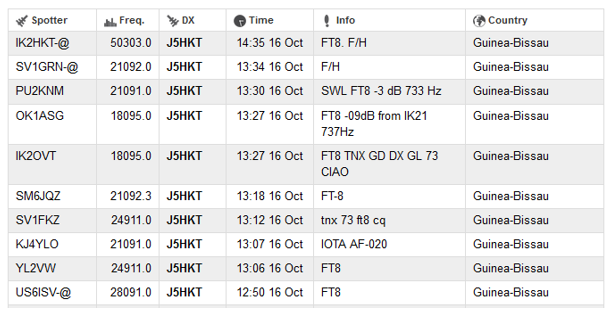
At the time of writing (the original article - October 2021); an Italian DXpedition to Guinea-Bissau was underway and checking dxsummit.fi indicated the bands and frequencies that were in use for FT8 QSOs.
There is a detailed description from Joe Taylor, (WSJT-X - Weak Signal communication by K1JT – extended version), on how to set-up for this specific mode of contact but I found that as long as you worked in a free/quiet space above 1,000 Hz, you were in with a chance! I had already proven this with an earlier DXpedition QSO.
There is a detailed description from Joe Taylor, (WSJT-X - Weak Signal communication by K1JT – extended version), on how to set-up for this specific mode of contact but I found that as long as you worked in a free/quiet space above 1,000 Hz, you were in with a chance! I had already proven this with an earlier DXpedition QSO.
The following screenshot shows the multiple transmitted signal from the Fox – J5HKT – at 687 and 747 Hz. I tried calling at 1,000 Hz, which looked clear at my end, but didn’t manage to get anywhere.
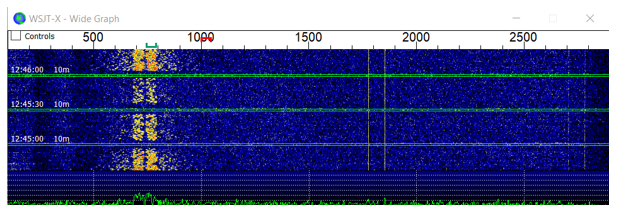
I decided to move up a few Hz and try again. This time with success! Note the double conversations in each transmission from the Fox station.
